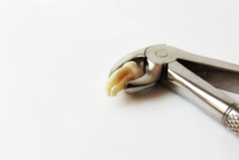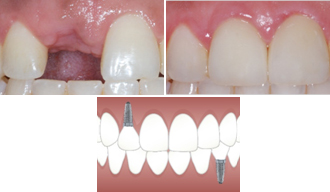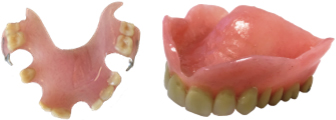What should I do following an extraction?

With regular dental check-ups and good oral care at home we hope to minimise the need for tooth extractions. There will however always be occasions when a tooth extraction is unavoidable such as where a tooth is severely decayed or badly broken or where it is required for orthodontic reasons. Although no one enjoys having a tooth removed, the procedure itself is usually straightforward and your dentist will provide you with post-operative instructions. It is important that these instructions are followed to reduce the risk of post-operative bleeding and infection and the chances of a dry socket which can be very painful.
See details below:
Post-Operative Advice
- Don’t disturb the extraction site. Following extraction, a blood clot will form which will help protect and heal the area where the tooth has been. It is important not to damage the clot so don’t let your tongue disturb it and try not to eat on that side or disturb it when brushing the rest of your teeth.
- Take it easy for the rest of the day. You may feel perfectly fine but don’t undertake any exercise/energetic activity for 24 hours and when resting keep your head above your feet. You may need an extra pillow at night. This will reduce the risk of further bleeding.
- Take painkillers if required. The socket may be tender. A certain amount of pain, swelling and bleeding in the first couple of days following extraction is normal. We recommend taking painkillers such as paracetamol to help with any discomfort. Do not take Aspirin as this will increase the risk of further bleeding.
- Be careful whilst still numb. Avoid drinking or eating anything hot until the anaesthetic wears off as you won’t be able to feel pain properly and could burn your mouth. Also be careful not to bite/chew your lips, cheeks or tongue.
- Don’t drink through straws. The sucking action from drinking through straws can dislodge the blood clot.
- Don’t Smoke. There are a couple of problems with smoking after an extraction. Firstly, the sucking action can dislodge the blood clot. If this is no longer over the wound, there is an increased risk of infection. Secondly the chemicals in the smoke can increase bleeding and inflammation. Smoking too soon after an extraction can also create a complication called a dry socket.
What is a dry socket?
A dry socket occurs when either a blood clot fails to form properly or it falls out after a tooth extraction. This leaves the bone and nerve endings exposed and can be very painful. Dry socket isn’t very common and will usually start 2-4 days after the tooth extraction. You will experience a throbbing pain and may have bad breath and a bad taste in your mouth. If you have a dry socket it is important that you see your dentist who will clean out the socket and may place a dressing in the site.
What to do if bleeding continues after leaving the dental practice
Your dentist will have given you gauze bite packs to take home. Place over the socket and bite firmly for at least 20 minutes. If you don’t have a bite pack use a clean cotton handkerchief rolled up. If bleeding continues after two hours contact your dentist for further advice.
Should I replace my missing tooth?
There are several reasons why it is recommended that you replace your missing tooth once the extraction site has healed:
- For each missing tooth, you lose about 10% of your chewing ability and put more force on the remaining teeth.
- As soon as one is missing, the surrounding teeth start to drift into the empty space which can lead to a change in your bite, gum disease and possible tooth decay.
- After an extraction, the bone that supports the teeth begins to shrink over time and your face adjusts with it. Even a missing back tooth can cause your mouth to shift, potentially making your face look older. No one wants to look and feel older than they are.
What are my options for replacing my missing tooth?
A dental implant is the most natural way to replace a missing tooth. This solution feels and acts the most like a natural tooth when chewing, brushing or smiling.

A bridge is another option to replace a missing tooth. Conventional bridges can be used when you have natural teeth on both sides of the gap created by your missing tooth. The downside of these as a solution is that your dentist will need to remove enamel from the adjacent teeth to make room for the bridge to be cemented on top.

A denture is also an option for replacing missing teeth. A partial denture is used to replace some of your teeth and relies on surrounding teeth for support. A full denture is used when all teeth are missing.




